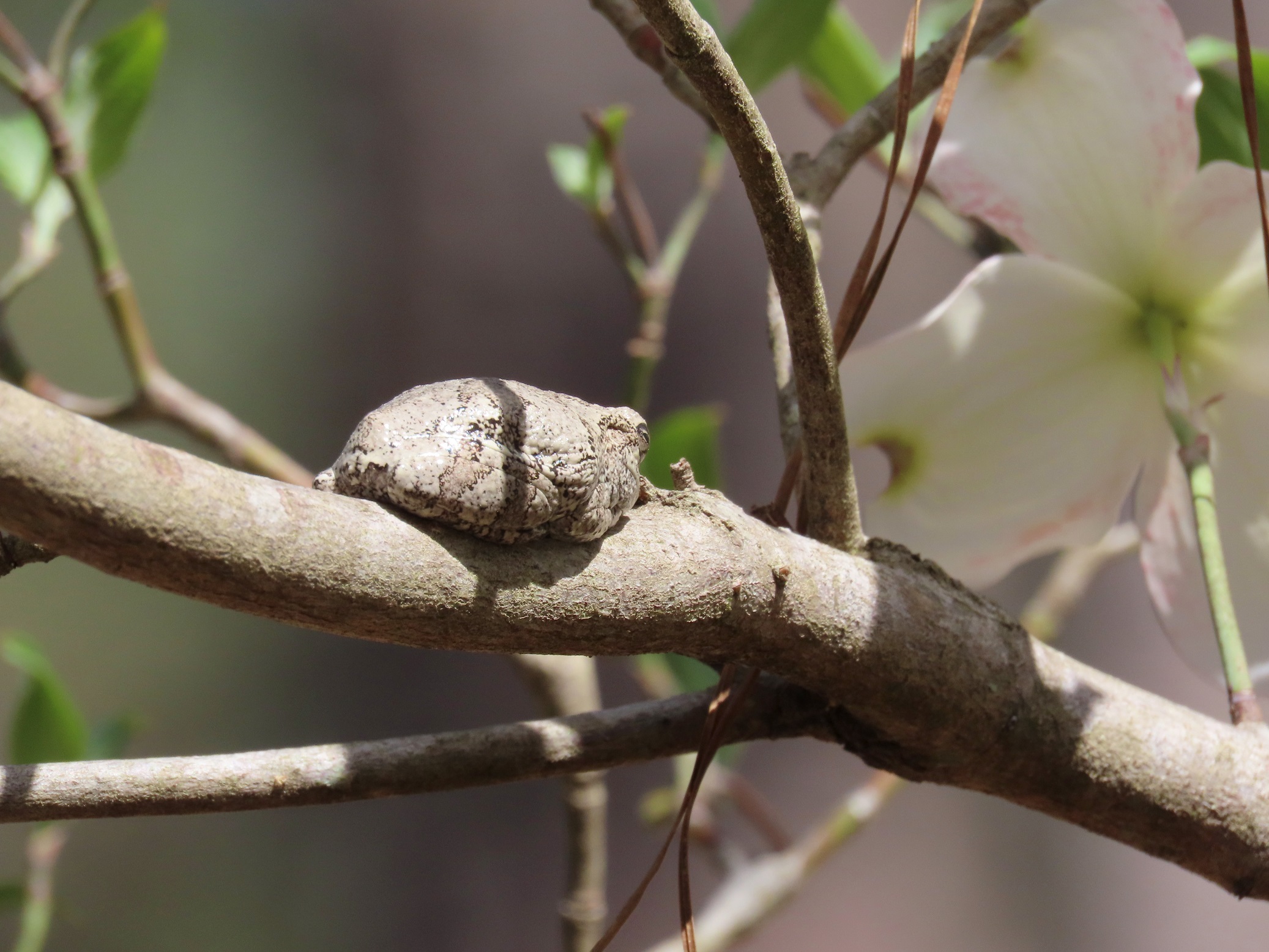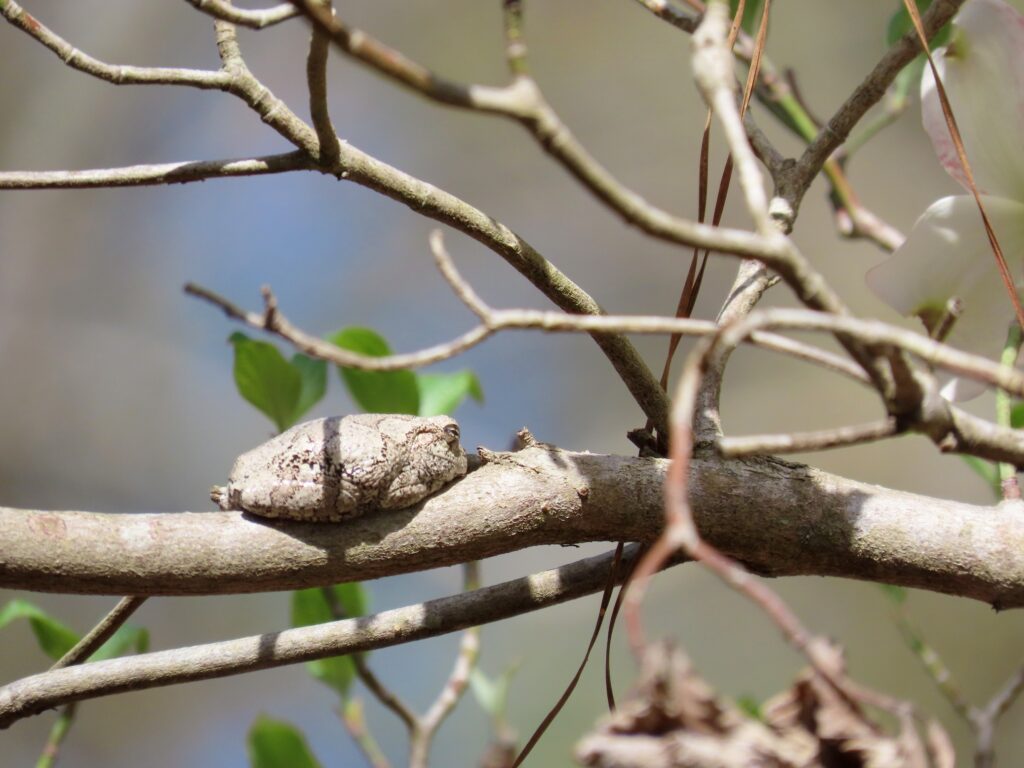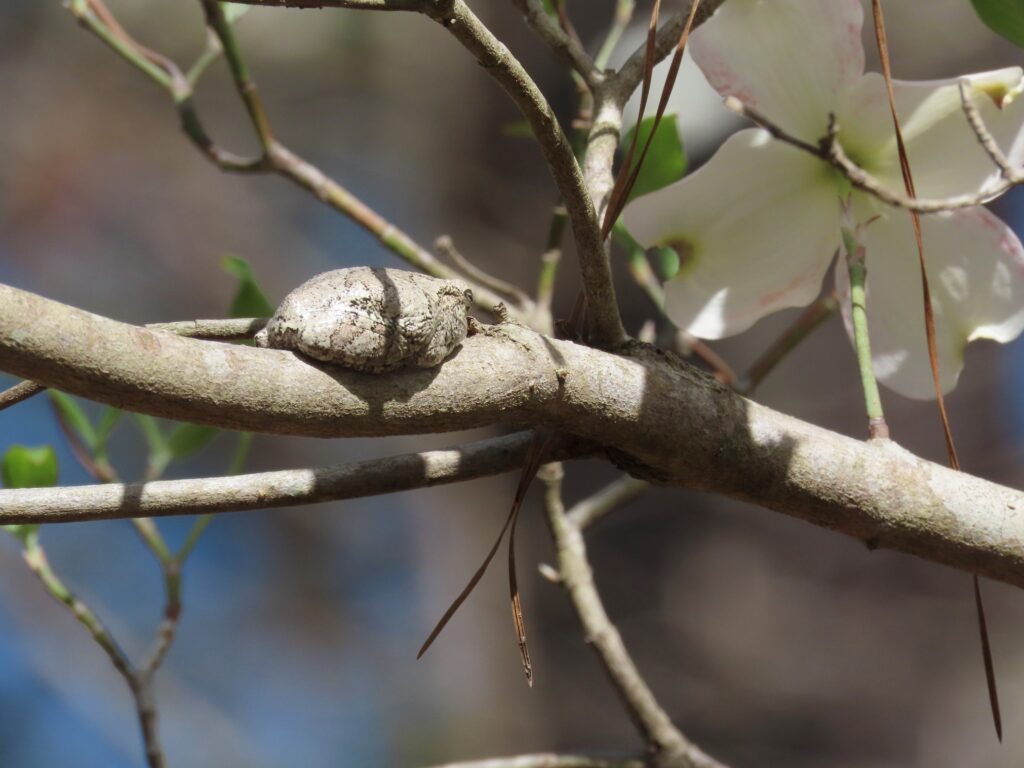


This week for Flora and Fauna Friday we’re on the lookout for a cryptic climbing amphibian of the forest canopy, the Cope’s Gray Treefrog (Hyla chrysoscelis).
The Cope’s Gray Treefrog is found throughout the southeastern United States, to include all of South Carolina and our Sea Islands. It has a sister species to the north, the Gray Treefrog (H. versicolor), that is nearly identical in appearance but not found in South Carolina. The Cope’s Gray Treefrog is unique in many regards to our other Treefrogs. It is colored to camouflage itself with tree bark and any lichens growing on that tree. Its skin is bumpy, covered in fine warts across its body, giving it the texture of a lichen, and is colored ash-gray, faded-bronze, or pastel-green with uneven darker stripes and blotches to blend them into the bark background. This makes them nearly impossible to spot when motionless on an appropriately colored limb or tree trunk. The only flashy color on them is a wash of orange along the joints of their legs, which is peppered in tangerine spots on the back of their thighs. All this color is hidden from sight unless they’re in motion. The skin of the Gray Treefrogs also secretes a toxin that irritates mucus membranes, like are found in the mouth, eyes, and nose. This is a defensive toxin to discourage predators and can irritate you as well, if you forget to wash your hands after picking one up, but is otherwise harmless to humans.
The Cope’s Gray Treefrog is one of our most arboreal Treefrogs, spending much of their time in the canopies of hardwood trees. They are primarily nocturnal, hiding under bark or in holes during the day and hunting insects and arthropods at night. They prefer mature deciduous forests and, although quite common, are hard to lay eyes on due to their cryptic colors, nocturnal nature, and elevated lifestyle. However, they aren’t a hard frog to hear! Cope’s Gray Treefrogs have a loud, resonant trill that last about a second. It is a common sound in the spring forest, reverberating through the treetops. Like all our Treefrogs, males have an expandable throat pouch that they inflate to amplify their call. Cope’s Gray Treefrogs rely on fishless, ephemeral wetlands to safely rear their offspring. From spring through mid-summer, they’ll descend to the forest floor after heavy rains to mix and mingle at the margins of these ephemeral wetlands. There their tadpoles will quickly hatch, grow, and metamorphose into miniature froglets, all before the wetland dries up again.